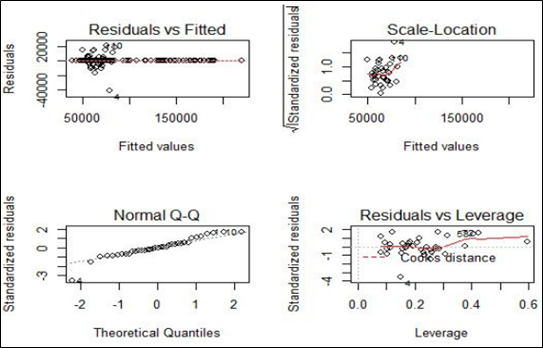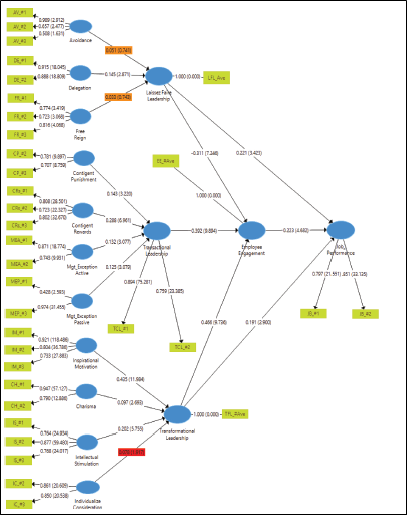How Statistics assists in Consumer Packaged Goods data analytics
Introduction
In the Consumer Packaged Goods (CPG) industry, incorporating data into the overall marketing approach is critical to keeping ahead of the competition. Top-performing brands approach their markets with a data-driven mindset, identifying patterns and patterns to guide strategic decisions. A data-driven business uses CPG data analytics to build a continuum of quality development in the industry, enabling them to develop and change on the fly. This blog post will define CPG data analytics and how statistical models can support organizations with CPG.
1. What are CPG Data Analytics?
CPG data management refers to the gathering and interpreting data points arising from any promotional marketing activities taken by a company in the field. Through focusing on data, CPG brands can turn the data they gather into valuable intelligence by processing it and identifying patterns. Consider data to be the various points on a line. Analytics is the knowledge gained by analyzing the graph. In CPG data analysis, brands can focus on three types of data: observational data, behaviour data, and revenue data.
2. Consumer packaged goods models in recent research
i)In the current economic climate, firms must take advantage of all available resources to succeed in the market. To stay on the right track, each sector’s decisions should be based on thorough analysis. Data science is perfect for using all of an organization’s internal and external knowledge and correctly predicting the outcomes of their actions through different processes. The philosophy of marketing evolved to study the marketing mix, which is one of the core principles of marketing and refers to the most relevant influences determining the course of a company’s product, according to the work of Mantzoufa [1].
The 4Ps, or Price, Product, Promotion, and Location, are the most important factors. They are extremely common in marketing because they are the foundational elements in which any company must spend. Using the R programming language and SAP Expert Analytics, the investigation was carried out using the multiple linear regression algorithms for modelling. Four residual plots (Figure 1) will be generated with the plot(model) command, where the model is the outcome of our study, and we can extract some insights as seen in the figure below.

Figure 1. Residual plots [1]
ii)The annual growth rate of real GDP per working worker (SDG 8) is a metric of labour productivity that provides details on the quality and utilization of human resources in the manufacturing process. Adeniji and his colleagues [2] looked at leadership aspects, workforce motivation, and work success in their research. The report was descriptive, and it included the delivery of survey questionnaires to 422 employees from various Nigerian CPG companies.The study results showed that the three variables, namely leadership aspects (Transformational, Transactional, and Lassez faire), employee engagement, and job efficiency, intersect and interconnect in a holistic way using the Partial Least Square (PLS) path modelling process.
The model shows that transformational leadership, transactional leadership, and employee engagement have a significant and moderate connection. Lassez faire was found to have a negative association with employee involvement. As a result, an uptick in the leaders’ laissez faire mentality would eventually reduce job efficiency.On the other hand, there was an important link between work participation and success. As opposed to transactional and Lasseiz faire leadership, transformational leadership was more efficient in achieving higher levels of worker efficiency. As a result, managers of the chosen companies significantly impact employee behaviour, employee motivation, and work efficiency, both of which affect actual GDP per individual working, which is used as a measure of labour productivity in SDG 8. Figure 2 shows the weight vectors obtained as convergence meets fixed point equations.

Figure 2. Outer model (outer weights/loadings and T-values); inner model (path coefficient and P-values) [2].
3) Consumers spend less time and gather less detail by making low-involvement product purchases. As a result, they do not consider their buying decision. This is because low-involvement goods are frequently inexpensive and have a low risk of failure. Along with uncertainties, little deliberate decision-making occurs in many cases, especially in low-involvement items and commonly bought consumer packaged goods. A stochastic model that focuses on decisions’ random existence is preferable to a deterministic solution in such cases.A stochastic model for customer purchasing decisions of low involvement goods was created by AtanuAdhikari [3]. We took agitations into account from a buyer’s perspective during the buying process. These agitations provide intrinsic energy that activates the mind of the user. These powers are chaotic, and the resulting force is random, causing buying decisions to be made at random.
There is plenty of research that used statistics to solve CPG problems [4]& [5].
Conclusion:
Efficient CPG businesses are built on data. Each of these strategic goals is based on developments in customer data and organizational data. The days of relying on instincts and guesswork to decide whether to position on shelves, run sales, and set price points are long gone. Consumer packaged goods firms must have a 360-degree data-based view of their operation and supply chain, as well as a deep knowledge of their clients and the items they will demand to succeed.Businesses will develop those ideas, explore potential business prospects, and find solutions to sustain their market share in the modern future as they advance their evolution to intelligent companies.
References
[1] Mantzoufa, Ioanna, 2019, Consumer Packaged Goods (CPG) Predictive Analytics Models, Available at: http://hdl.handle.net/11544/29505, [Accessed May 20, 2021].
[2] AnthoniaAdeniji, AdewaleOsibanjo, OdunayoSalau, TolulopeAtolagbe, OluwatunmiseOjebola, AbisolaOsoko, RemilekunAkindele&OgheneofejiroEdewor | (2020) Leadership dimensions, employee engagement and job performance of selected consumer-packaged goods firms, Cogent Arts & Humanities, 7:1, 1801115, DOI: 10.1080/23311983.2020.1801115
[3] Adhikari, A. (2019) Consumer Behavior in Low Involvement Product Purchase: A Stochastic Model. Theoretical Economics Letters, 9, 424-430. https://doi.org/10.4236/tel.2019.92030.
[4]Premanandh, J. and Bin Salem, S. (2017), Progress and challenges associated with halal authentication of consumer packaged goods. J. Sci. Food Agric, 97: 4672-4678. https://doi.org/10.1002/jsfa.8481.
[5] Raman, B, Sen, K, Gorti, V, Ravishanker, N. Improving promotional effectiveness for consumer goods—A dynamic Bayesian approach. Appl Stochastic Models Bus Ind. 2021; 1– 11. https://doi.org/10.1002/asmb.2617.

 Previous Post
Previous Post Next Post
Next Post